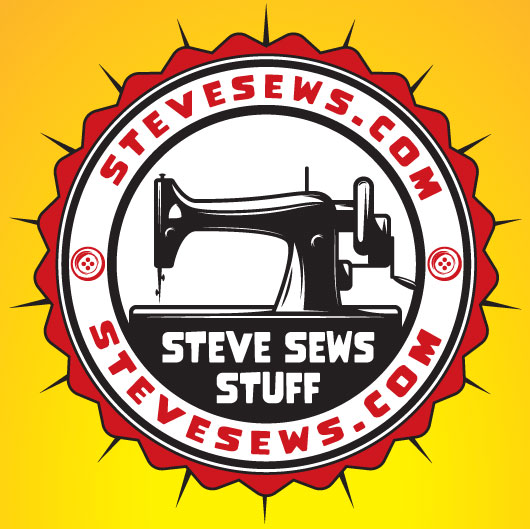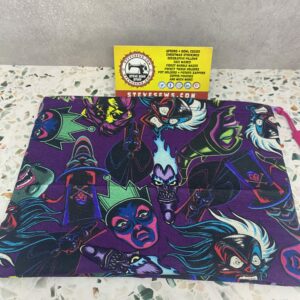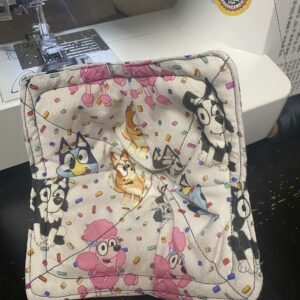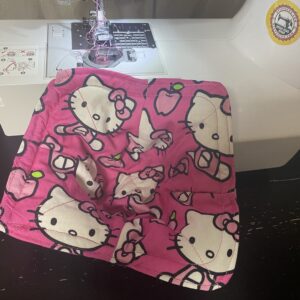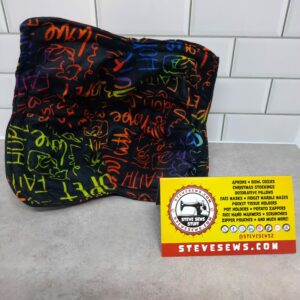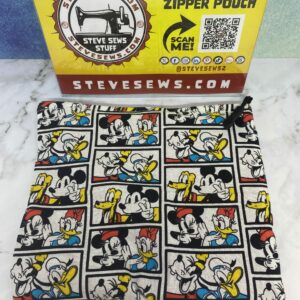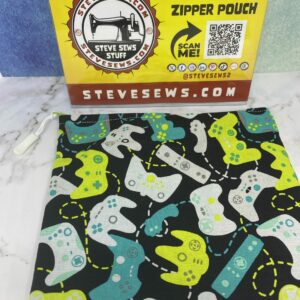Underground Railroad Quilt Code – When Africans were brought to America as slaves, their strong oral tradition accompanied them. In a number of African tribes, the most honored person was the storyteller, who committed to memory the entire history of the tribe, which he then taught to a younger member of the group. Each succeeding generation was assured in this way that the tribe’s historical record would be retained.
Underground Railroad Quilt Code
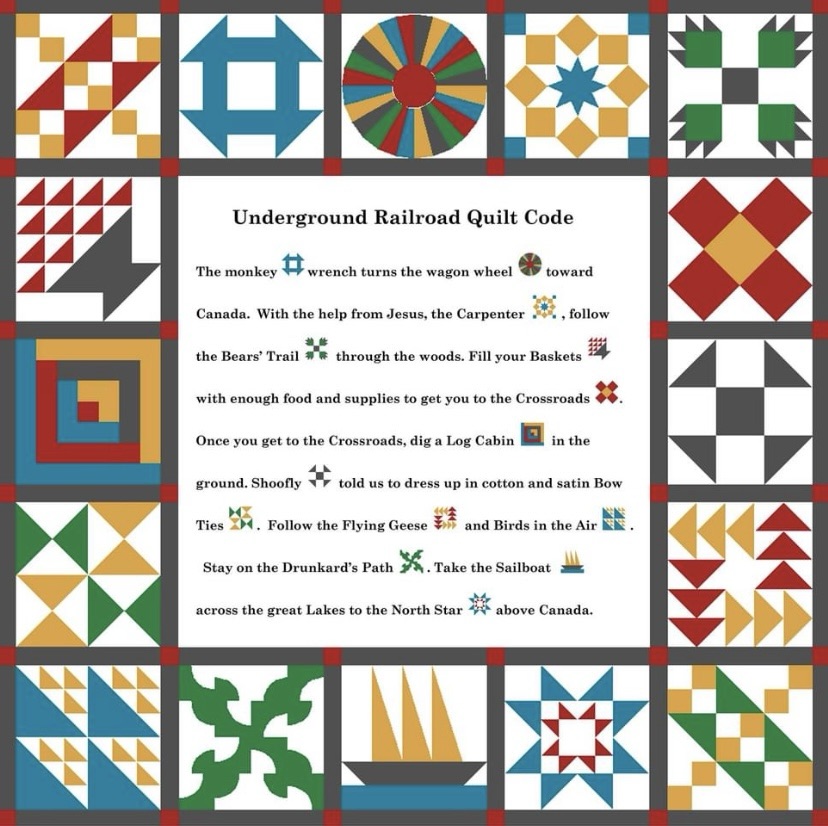
The Underground Railroad Quilt Code is a historical theory suggesting that quilts were used as a form of communication among escaping slaves in the United States during the 19th century. According to the theory, specific quilt patterns and symbols were employed to convey messages and directions to those seeking freedom. While the authenticity of the Quilt Code remains debated among historians, it has gained attention as a fascinating aspect of African American folklore and the oral tradition. The theory was popularized by the book “Hidden in Plain View: A Secret Story of Quilts and the Underground Railroad” by Jacqueline L. Tobin and Raymond G. Dobard.
The Underground Railroad Quilt holds a rich tapestry of history woven into its fabric, serving as both a symbol of resistance and a beacon of hope during a dark period in American history. As we delve into the intricate patterns and hidden meanings behind these quilts, we uncover a remarkable chapter of resilience and solidarity.
Origins of the Underground Railroad Quilt:
The Underground Railroad was not an actual railroad, but a network of secret routes and safe houses used by enslaved individuals seeking freedom in the 19th century. To communicate covertly, abolitionists and escaped slaves developed a system of symbols and signals. One of the ingenious ways they conveyed messages was through quilts.
Quilts as Coded Messages:
The quilts of the Underground Railroad were not simply pieces of art; they were crucial tools in the quest for freedom. Certain quilt patterns, when displayed or hung, communicated vital information to those seeking refuge. Each quilt block represented a different message, such as “Safe House Ahead” or “Follow the North Star.”
The Monkey Wrench, Bear’s Paw, and Drunkard’s Path were among the numerous quilt patterns that conveyed hidden meanings. These symbols guided escaping slaves along their perilous journey, helping them navigate the intricate network to reach freedom. Continue to read to learn more.
Some symbols in the Underground Railroad Quilt Code include:
Each one has a link to learn more about each type of quilt block.
Monkey Wrench: Pack your belongings, as you’ll need them on your journey. (Get ready! Gather the tools you’ll need to build shelters, navigate the journey, or defend yourself along the way.)
Bear’s Paw: Follow the bear’s trail, indicating a safe path in the wilderness. (Follow an animal trail through the mountains to find water and food.)
Crossroads: A signal to change direction or seek guidance at this point. (Keep going and travel to the crossroads in Cleveland, Ohio. Nicknamed “Hope”, this vibrant Underground Railroad station, was the last stop where slaves would board a boat to Canada.)
Log Cabin: Safe house or shelter for the night (Seek shelter now, the people here are safe to speak with — You’ve reached a safe house. Congratulations you have found new friends who are friends of slaves).
Flying Geese: Follow the direction of the flying geese to find the way. (Follow the migrating geese north to Canada (and freedom).
Drunkard’s Path: Go back one space because slave hunters are near. Double back to elude then immediately.
North Star: Head north to freedom. (Look to the skies to help you navigate the way. Follow the North Star to Canada.)
Bow Tie: Dress in disguise to appear of a higher status. (You’re looking pretty tattered. To disguise yourself as a freed slave, you’ll need a change of clothes. The Bow Ties quilt block is a code to tell you someone will bring you nicer clothing.)
Tumbling Blocks: The time has come to box up your belongings. Your escape will be happening soon.
These symbols were discreetly woven into quilts to convey messages and guide escaping slaves along the Underground Railroad.
The Importance of Quilting in African American Culture:
Quilting has deep roots in African American culture, serving as a form of artistic expression, storytelling, and community bonding. Enslaved individuals brought their quilting traditions from Africa, and through the centuries, these quilts evolved into powerful tools for resistance.
Quilting as a Form of Empowerment:
Beyond their practical role in guiding freedom seekers, Underground Railroad Quilts held a profound significance for the individuals creating them. Quilting became an empowering act of resistance, allowing enslaved people to assert their identity, preserve cultural heritage, and build a sense of community even in the face of adversity.
Preserving the Legacy:
Today, efforts are underway to preserve the legacy of the Underground Railroad Quilts. Museums, historical societies, and passionate individuals work diligently to document and share the stories behind these quilts. By understanding the symbolism and historical context, we can ensure that the courage and resilience of those who used these quilts as beacons of freedom are never forgotten.
Lesser-known facts:
Here are some lesser-known facts about the Underground Railroad Quilts:
- Debated Authenticity: The existence and authenticity of the Underground Railroad Quilt Code are still debated among historians. Some argue that there is insufficient evidence to support the idea that quilts were systematically used as secret codes.
- Varied Quilt Interpretations: Different sources may provide varied interpretations of quilt patterns and their meanings, leading to some ambiguity in understanding the Quilt Code.
- Regional Variations: If the Quilt Code existed, it likely varied regionally, as the Underground Railroad operated across different states and involved diverse communities.
- Women’s Role: Women, particularly African American women, played a significant role in creating quilts, and the Quilt Code theory underscores their potential role in aiding the Underground Railroad.
- Modern Cultural Impact: Regardless of historical accuracy, the idea of the Underground Railroad Quilt Code has made its mark in popular culture, inspiring art, literature, and quilting communities.
Remember, while the Underground Railroad Quilt Code remains a captivating aspect of history, its specifics and veracity are not universally accepted among scholars.
In conclusion, the Underground Railroad Quilt stands as a testament to the power of creativity, resilience, and community in the face of oppression. It serves as a poignant reminder of the lengths people went to secure their freedom and the enduring impact of art as a tool for social change.
Upcoming Events
This is a list of the upcoming events that Steve Sews will be at. If you know of one in the East Tennessee area, let me know.
None at this time. Check back later.
Meet …
Meet the staff and/or equipment for Steve Sews.
- Brother Stitch (Current Sewing Machine)
- Forge (Circuit)
- Interns
- Lovees (Stuffed Animals)
- Mendi (My Wife’s Sewing Machine)
- Rosie (Antique Sewing Machine)
- Steve (Steve himself)
- The Masked Bandit (Steve’s older Sewing Machine)
- Trainees
- Van the T-Rex (Helper)
- Zee (Face Mask Model)

SUBSCRIBE TODAY!
Don’t miss a single blog post about sewing, quilting, crafts, and recipes! Plus so much more!
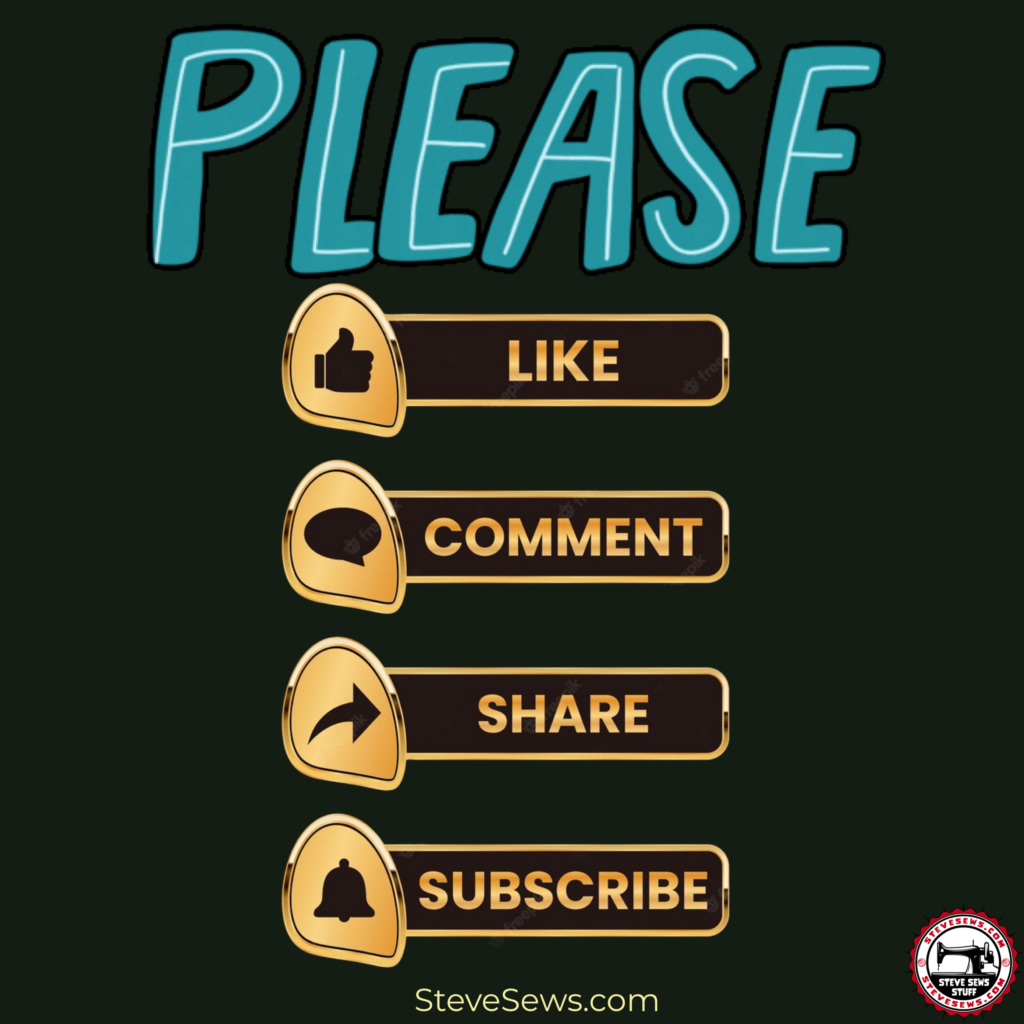
Follow on WordPress
Follow Steve Sews Stuff on WordPress.comFollow Steve Sews Stuff on Social Media:
You can also choose to follow Steve Sews Stuff most social media as well. (@SteveSews2)
Below are some examples of blog entries from all blogs that I do. (Courageous Christian Father, Steve Sews Stuff and SteveZ DesignZ).
Recent Feed of All of Steve’s Blogs
Recent Posts on Steve Sews
Below is a list of the most recent blog posts found on Steve Sews for you to check out.
Clipart: Unsplash, Pixabay, Pexels, Openverse, Adobe Express, Adobe Stock, FreePik, MetroCreative, Wonder AI, Algo AI and more. This site uses Amazon Affiliate Ads & Google Ads.
